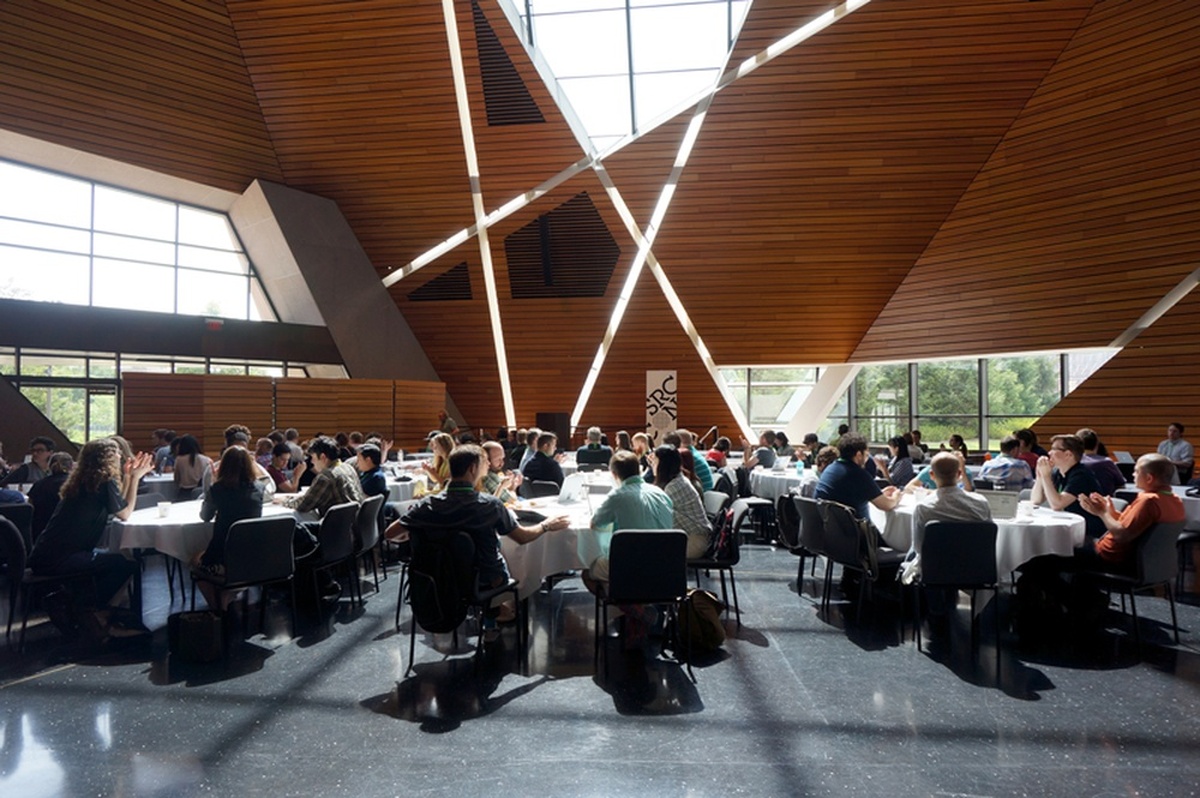Features:
Why a Kickoff Kit Makes Starting New Projects Easier
Rosy Catanach & Sara Bremen Rabstenek on aligning your team early

The McNamara Alumni Center, where we’ll return for SRCCON 2018. (Erik Westra, 2016)
SRCCON 2018 is this week (!!), and as a preview, we’ve asked a handful of facilitators to tell us about their sessions. Today we’ve got Rosy Catanach and Sara Bremen Rabstenek of the New York Times, talking about an easier way to help teams find their common ground from the very beginning.—Ed.
Q. What’s the origin story for this session? Why did you pitch this particular session, in this particular year?
Rosy: From 2013 until last fall, we were part of a team called NYT Beta, and our mission was to create new standalone subscriptions for the Times. We found ourselves every 6 months or so with a new opportunity that needed to have a new team behind it. The team grew quickly, from five to almost 80 people. After two or three of these, we found some teams “gelled” organically, and others didn’t, and we set about trying to find out why, and how we could address it. At one point we had a particularly difficult meeting with one of the teams, and we looked at each other and thought, “Why is this so hard? We’ve done this so many times now!” And that’s where the Kickoff Kit idea came from. We’ve done this rodeo many times before.
Sara: One big realization was that addressing team dynamics and acknowledging how each team member works early on can make a big difference. It’s en vogue now to talk about “team norms,” but they’re valuable, and arriving at them together ensures that they take everyone into account. Figuring out how a team can best work will only make what they produce that much better.
Q. Can you share some insights about why this methodology works for you, and why others might benefit from it? It’s an investment of energy upfront, which a lot of organizations might be skeptical of.
Rosy: Regardless of project, we found the hardest parts of being a team were pretty common—they were either misalignment on the problem, unstated assumptions, or misunderstandings about how different people do their work. But these problems were taking a toll on the team—there was often confusion, duplicated work, or it became emotional overhead. These activities worked for us simply on trial and error. We borrowed a little of everything—Agile/Scrum, Human Centered Design, Design Thinking, our own ideas—and these were consistently the most helpful.
We are the first to admit that activities like these are absolutely a “business side” thing. When we work with journalists, they are almost always skeptical and mystified, some of them skip all together. The thing to note, though, is that it doesn’t have to take that long —a leap of faith and an hour and a half is enough to start things off right.
Sara: Right—all of the ways in which we work impact the work itself. Just knowing more about each other will make for better products. And the exercises feel silly or artificial at first, but working through the artificiality can result in real understanding of each other.
Q. What are you most hoping that people will walk away with, after your session? What are you most looking forward to, in bringing this to SRCCON?
Sara: I hope that people take away an activity or two that might help improve their own team dynamics. I hope we can help people think about their own team processes and ways of working and how improving them can improve the products created.
Rosy: What Sara said! And also I hope people walk away with more empathy for disciplines and work styles that differ from theirs.
Organizations
Credits
-
 Lindsay Muscato
Lindsay Muscato
Editor of Source from 2015-2020



